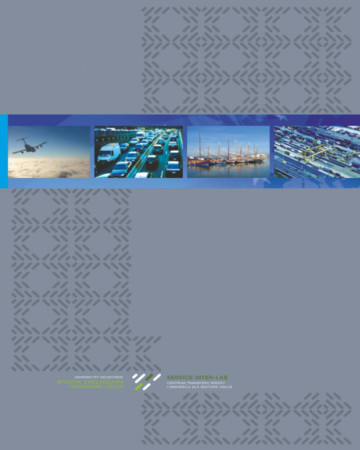
ISSN: 1644-275X
eISSN: 2353-3005
OAI
DOI: 10.18276/ptl.2016.35-17


Issue archive /
nr 3 (35) 2016
Port lotniczy Szczecin w badaniach naukowych
(SZCZECIN AIRPORT IN SCIENTIFIC RESEARCH)
| Authors: |
Dariusz
Tłoczyński
Wydział Ekonomiczny, Uniwersytet Gdański |
| Keywords: | air transport airport Szczecin passenger |
| Data publikacji całości: | 2016 |
| Page range: | 14 (173-186) |
| Klasyfikacja JEL: | L93 |
Abstract
The importance of air transport as part of the global transport system results from the use of its advantages and characteristic properties for the development of economic, political, scientific, technological and cultural cooperation and for the development of tourism. The article analyzes data from primary and secondary sources concerning the functioning of the regional airport in Szczecin. The operating results and the analysis of passenger profile are important elements in shaping the strategy of the airline company. They also affect the region’s economy. The article presents the results of primary research conducted at the airport in Szczecin. They were carried out by personal interview with every fourth passenger heading to security checks. The conclusions and then properly presented profile of the passenger are essential to attract new carriers, to improve operational results, and this in turn contributes to the further economic development of the region.
Download file
Article file
Bibliography
| 1. | Airport Industry (2014). Connectivity report, ACI. |
| 2. | Aviation Benefits Beyond Borders (2014). Oxford Economics dla ATAG. |
| 3. | Burghouwt, G., Redondi, R. (2013). Connectivity in Air Transport Networks. An Assessment of Models and Applications. Journal of Transport Economics and Policy, 47 (1), 37–41. |
| 4. | Burghouwt, G., Veldhuis, J. (2006). The Competitive Position of Hub Airports in Transatlantic Market. Journal of Air Transportation, 11 (1), 106 130. |
| 5. | Dane Urzędu Lotnictwa Cywilnego. |
| 6. | Danesi, A. (2006). Measuring Airline Hub Timetable Co-ordination and Connectivity: Definitione of a New Index and Application to a Sample of European Hubs. European Transport, 34, 54–74. |
| 7. | Dennis, N. (1994a). Airline Hub Operations in Europe. Journal of Transport Geography, 2 (4), 219–233. |
| 8. | Dennis, N. (1994b). Scheduling Strategies for Airline Hub Operations. Journal of Transport Management, 1 (2), 131–144. |
| 9. | Dennis, N., Doganis, R. (1989). Lessons in Hubbing. Airline Business, 3, 42–47. |
| 10. | Koźlak, A. (2012). Nowoczesny system transportowy jako czynnik rozwoju regionów w Polsce. Gdańsk: Wyd. UG. |
| 11. | Malighetti, P., Paleari, S., Redondi, R. (2008). Connectivity of the European Airport Network: „Self-help Hubbing” and Business Implications. Journal of Air Transport Management, 14 (2), 53–65. |
| 12. | Mańkowska, M. (2013). The Areas of Competition and Planes of Cooperation in the Polish Passenger Transport Market (Sea, Rail and Air Transport). Logistics and Transport, 20 (4). |
| 13. | Mańkowska, M., Mańkowski, T. (2013). Możliwości integracji transportu kolejowego i lotniczego na przykładzie portu lotniczego Szczecin-Goleniów. Zeszyty Naukowe Uniwersytetu Szczecińskiego, 778, Problemy Transportu i Logistyki, 22, 122–125. |
| 14. | Marciszewska, E., Kaliński, D. (2009). Port lotniczy jako czynnik rozwoju regionalnego. W: A. Barski, W. Fabirkiewicz, C. Jarosz (red.), Rozwój lotnictwa w regionach (s. 5–9). Toruń: Wyd. Adam Marszałek. |
| 15. | Materiały wewnętrzne Portu Lotniczego Szczecin. |
| 16. | Paleari, S., Redondi, R., Malighetti, P. (2010). A Comparative Study of Airport Connectivity in China, Europe and US: Which Network Provides the Best Service for Passengers? Transportation Research, 42 (2), 198–200. |
| 17. | Pearce, B. (2014). Adding Value Despite Difficult Business Conditio. IATA. |
| 18. | Tłoczyński, D. (2014). Accessibility jako instrument kształtowania polskiego rynku usług transportu lotniczego. W: J. Sokołowski, A. Żabiński (red.), Problemy ekonomii, polityki ekonomicznej i finansów publicznych (s. 371–381). Wrocław: Wyd. UE we Wrocławiu. |
| 19. | Tłoczyński, D. (2016). Konkurencja na polskim rynku usług transportu lotniczego. Gdańsk: Wyd. UGd. |
| 20. | Veldhuis, J. (1997). The Competitive Position of Airline Networks. Journal of Air Transport Management, 3 (4), 181–182. |
| 21. | Veldhuis, J., Kroes, E. (2002). Dynamics in Relative Network Performance of the Main European Hub Airports. Cambridge: „Proceeding of the European Transport Conference”, 106–130. |
| 22. | Wołek, M. (2009). Transport kolejowy w obsłudze portów lotniczych. Europejskie studia przypadków. Logistyka, 3, 1–12. |